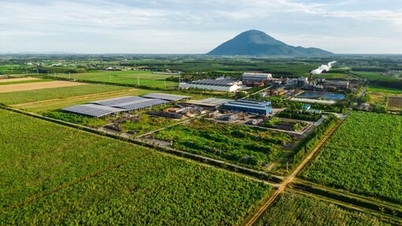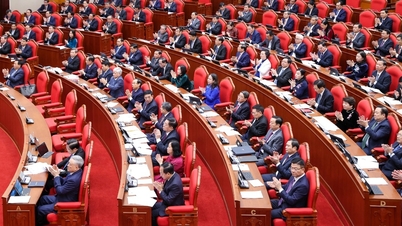The revised Law on Social Insurance 2024 officially takes effect from July 1, 2025, bringing a series of important changes in the way pensions are calculated, especially for employees with a short period of social insurance participation.
Pension conditions (before and after the new law)
Workers receive pension when they meet two basic conditions: reaching retirement age and paying the minimum number of years of social insurance.
Regarding retirement age, from before to after the Social Insurance Law 2024 takes effect, this regulation remains the same according to the Labor Code 2019.
From 2021, the retirement age under normal working conditions will start at 60 years and 3 months (men) and 55 years and 4 months (women), then increase by 3 months (men) and 4 months (women) each year. In other words, the retirement age is gradually increasing according to the roadmap to 62 years old for men (2028) and 60 years old for women (2035).
Workers who do heavy or hazardous work or have reduced working capacity can retire earlier, but will usually have 2% of their pension deducted for each year they retire early.
Regarding the minimum number of years of social insurance contributions, before the Social Insurance Law 2024 takes effect, the condition for receiving a mandatory pension is that employees must have at least 20 years of social insurance contributions for men and 15 years for women.
From July 1, 2025, the new regulation allows both men and women to receive pensions with a minimum of 15 years of social insurance contributions. This regulation is intended to create opportunities for late or intermittent social insurance participants to accumulate enough time to receive pensions, instead of having to withdraw social insurance at once because the 20-year mark is too long. It should be noted that separate regulations still apply to cases of retirement due to reduced working capacity.
The Social Insurance Law 2024 takes effect from July 1, 2025, bringing many changes to the pension regime (PHOTO: Ho Chi Minh City Social Insurance)
To receive pension , employees must continuously pay compulsory or voluntary social insurance until reaching retirement age, or can reserve participation time.
After retirement, workers enjoy additional benefits such as health insurance paid for by the social insurance fund or the budget.
If retiring before the age or not having enough years of contribution, employees can receive monthly benefits (if meeting new conditions under the Social Insurance Law 2024).
Formula for calculating pension percentage and pension level before and after July 1, 2025
The monthly pension is calculated by multiplying the pension rate (%) by the average monthly salary for social insurance contributions (adjusted for inflation).
In which, the rate (%) of pension benefits before July 1, 2025 according to the Social Insurance Law 2014 depends on the number of years of contribution and there is a difference between men and women.
Specifically, female workers with 15 years of social insurance contributions receive 45% of the average salary for social insurance contributions; each additional year of contributions is increased by 2%; the maximum level is 75% corresponding to 30 years of contributions.
Male workers with 20 years of social insurance contributions receive 45%; each additional year of contributions receives an additional 2%; the maximum level is 75% corresponding to 35 years of contributions.
If you retire early before the prescribed age, your pension will be reduced by 2% for each year of early retirement.
After July 1, 2025, the pension rate (%) will remain the same for women and be adjusted for men in the group under 20 years. Specifically:
Female workers: No change in calculation. Pay for 15 years and get 45%, plus 2% each year, ceiling 75% (30 years).
Male workers: If you have 15 to under 20 years of social insurance contributions, you will receive 40% at the 15-year mark, then +1% each year (because 20 years is only 45%). From 20 years or more, the calculation is the same as before: 45% at 20 years, +2% each year, maximum 75% at 35 years.
In other words, men with 15 years of social insurance contributions only get 40% (instead of not being eligible for pension before), 16 years 41%..., up to 20 years 45%, then +2%/year after 20 years.
This is a new point to support men who have contributed for less than 20 years to still receive pension (previously, men did not receive pension after <20 years).
Regarding the average monthly salary for social insurance contribution, this is the basis for calculating pensions, there is a difference between the public and private sectors./.
According to Thanh Nien Newspaper
Source: https://thanhnien.vn/dieu-kien-va-cach-tinh-luong-huu-thay-doi-ra-sao-tu-17-185250614160132498.htm
Source: https://baolongan.vn/dieu-kien-va-cach-tinh-luong-huu-thay-doi-ra-sao-tu-01-7-a197086.html





![[Photo] Opening of the 14th Conference of the 13th Party Central Committee](https://vphoto.vietnam.vn/thumb/1200x675/vietnam/resource/IMAGE/2025/11/05/1762310995216_a5-bnd-5742-5255-jpg.webp)


































![[Photo] Panorama of the Patriotic Emulation Congress of Nhan Dan Newspaper for the period 2025-2030](https://vphoto.vietnam.vn/thumb/1200x675/vietnam/resource/IMAGE/2025/11/04/1762252775462_ndo_br_dhthiduayeuncbaond-6125-jpg.webp)









































































Comment (0)